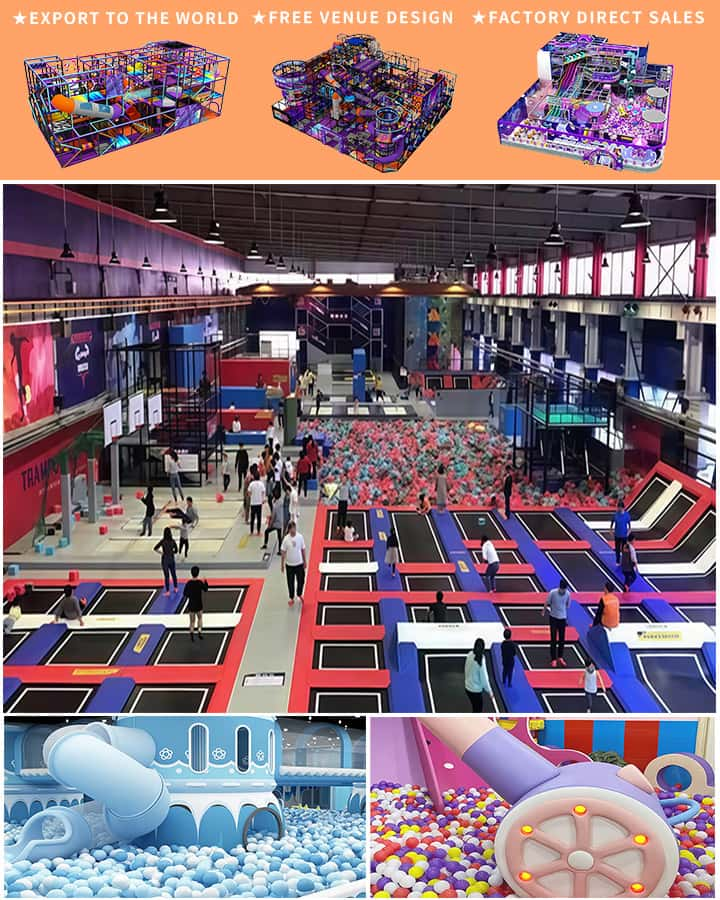Playgrounds are sanctuaries of joy and imagination for children, offering a break from their daily routines to engage in physical activity and social interaction. However, ensuring that these spaces are both fun and safe requires careful consideration when selecting playground equipment. Here’s a guide to help parents, educators, and community planners choose suitable playground equipment for kids that promotes development while prioritizing safety.
The Importance of Age-Appropriate Equipment
One of the most crucial factors in choosing playground equipment is age-appropriateness. Children develop at different rates, and their motor skills, cognitive abilities, and interests vary by age group.
Toddlers (1-4 years)
Toddlers need equipment that encourages basic motor skills such as climbing, balancing, and coordination. Low-to-the-ground structures like small slides, miniature seesaws, and soft play surfaces are ideal. These elements support their developing sense of balance and spatial awareness without posing significant risks.
Preschoolers (3-5 years)
As children grow older, they become more adventurous and capable of handling slightly more complex structures. Playground equipment for preschoolers might include low swings, climbing walls with handholds, simple monkey bars, and interactive panels that incorporate educational elements. These activities help enhance their gross motor skills and hand-eye coordination.
School-Age Children (6-12 years)
 School-age kids require challenging yet safe equipment that can cater to their advanced physical abilities. Structures such as taller slides, climbing domes, high ropes courses, and multi-person seesaws are excellent options. These pieces of equipment not only improve physical fitness but also teach teamwork and problem-solving skills.
School-age kids require challenging yet safe equipment that can cater to their advanced physical abilities. Structures such as taller slides, climbing domes, high ropes courses, and multi-person seesaws are excellent options. These pieces of equipment not only improve physical fitness but also teach teamwork and problem-solving skills.
Safety First: Key Considerations
When selecting playground equipment, safety should never be compromised. Here are some essential safety features to look for:
Material Quality
High-quality materials ensure the durability and safety of playground equipment. Non-toxic, weather-resistant materials like powder-coated steel, heavy-duty plastics, and soft rubber mats are preferable for longevity and safety.
Proper Surfacing
The surface beneath the playground equipment is equally important. It should be soft and impact-absorbing to reduce the risk of injuries from falls. Options such as rubber mulch, wood chips, or artificial turf provide adequate cushioning.
Safety Standards Compliance
Ensure that the playground equipment complies with local safety standards and regulations. This includes ASTM (American Society for Testing and Materials) and CPSC (Consumer Product Safety Commission) guidelines in the United States, which outline specific safety requirements for playground equipment.
Promoting Inclusivity and Accessibility
Inclusive playground equipment caters to children of all abilities, ensuring everyone can enjoy playtime together. Features such as wheelchair-accessible structures, sensory-rich elements, and transfer stations make playgrounds welcoming to all children, including those with disabilities.
Incorporating Educational Elements
Beyond physical activity, playgrounds can also serve an educational purpose. Interactive elements like alphabet and number puzzles, musical instruments, and nature exploration zones can stimulate cognitive development and curiosity. These additions make playgrounds dynamic learning environments where children can develop both physically and mentally.
Maintenance and Supervision
Regular maintenance is vital to keep playground equipment in safe condition. Routine checks for wear and tear, loose parts, and sharp edges should be conducted regularly. Additionally, supervision by responsible adults ensures that children use the equipment safely and adhere to any rules or guidelines.
Conclusion
Choosing the right playground equipment for kids is about striking a balance between fun, safety, and developmental benefits. By considering the age-appropriateness of equipment, adhering to safety standards, promoting inclusivity, and incorporating educational elements, we can create playgrounds that are both enjoyable and enriching for children. With thoughtful planning and regular maintenance, these outdoor havens will continue to be places where children can explore, learn, and grow.




